Premium Only Content
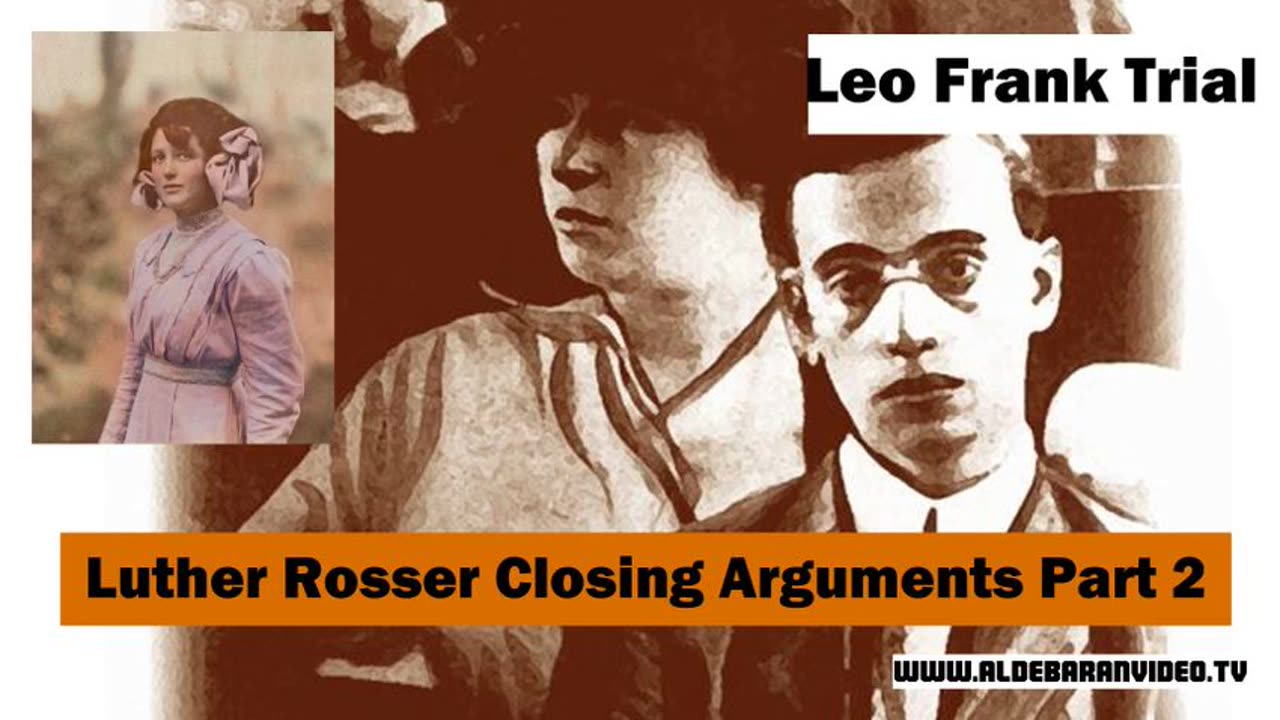
Leo Frank Trial - Luther Rosser Closing Arguments Part 2
The most significant information in this recording is that Frank had retained Black as counsel, and that the state's worst suspicion is that they also hired Herbert Haas. Frank had gone to the police department alone, without help or friends, and the next day two detectives were sent to find him. Black claimed to have been watching Frank on Monday and was then taken to the police station. Frank would have sought assistance from friends or a lawyer if he had known the odds against him. The old police gang and their tactics are known to local veteran Sig Montague.
He called Haas, but Haas declined to go to the police station, so he couldn't see Frank. Haas then requested the assistance of a more experienced and knowledgeable person to combat the injustice of the police. When Frank went to the police station and provided his statement, a detective agency hired him to find the murder that had been committed in his factory building. As Frank made his way to police headquarters, Sig gave him advice for the first time ever and urged him to make a statement. Despite being told they didn't want him when he got to the office, he persisted in going.
Frank's self-exposure and subsequent release is the text's most important revelation. He phone Sig Montague and asks for his advice on how to solve the crime. SIG suggests hiring a detective agency. The Pinkertons, who Frank hires, work with the local police department. Scott records Frank's statement and lets him know they work with the neighborhood police. After that, Scott and John Black, who has been arrested and is charged with murder, proceed through the basement of the pencil factory.
The testimony is concluded with a quotation from Sig Montague, who advises Frank to hire a detective agency to solve the crime. One of the most important details in the text is how the Pinkertons tried to frame him for the murder of a Jewish boy from the north in his place of business. The boy is willing to find the murderer despite his inability to defend himself because he is aware of his innocence. He does not believe that his friend who came before him had any intention of doing this, despite their claims that the time slip and shirt were planted although there is no evidence to support this. The shirt was found in a barrel when Black and another person went outside to visit Newt Lee's house on Tuesday morning. Newt insisted that the shirt was his or at least appeared to be his when they brought it back to the police station. Although it is not a legal duel, the newspaper and some other people seem to think it is.
Why old man Lee didn't find the body sooner, how he found it lying on its face, and how he saw it from a location from which he could not have seen it are just a few of the author's unanswered questions about the case. The author speculates that a nigger involved in the crime must have been the first to learn of it—before Newt or anyone else—because of his familiarity with niggers because he was raised among them.
The only outcome of the detectives' persecution of the old man was a god-fearing individual. The boy stepped out in front of a massive Gantt and jumped back. The most important information in this text is the assertion that Dorsey, Newt Lee, Jim Conley, and I would have acted similarly. Frank fired Newt Lee at the factory when he showed up at 4:00, but when he showed up again at 6:00, Frank let him stay. During the course of his employment, he was required to go into the basement where the body was allegedly found. Conley was there as well, and it was discovered yesterday that there was a third nigger present who was a lighter shade of nigger than Conley. When a man is accused of moral perversion, he suffers greatly, but when his mother and wife are also impacted, the suffering is increased.
To defend Frank, not even Dalton said this. The two most important details in this passage are that neither Dalton nor Starnes nor Starnes provided any proof that Frank had committed a crime or was otherwise wrong, and that none of the niggers they mentioned were aware of Frank's alleged moral perversion. Then there was the aged black man by the name of Draymond, who asserted that on that specific Saturday morning, old McCrary had cast him into the cellar.
Conley lied and said he was there between 2:00 and 3:00 on a Saturday last year, but Schiff, Darley, Holloway, and the little office boys all deny it, and the case is dropped. Hamlet, Merchant of Venice, and other Shakespearean plays are plays that actor Conley is familiar with. He can retell the events leading up to the disposition of the girl's body in either a forward or a backward chronological order. He stated unequivocally, " Boss, I don't remember that was his standard reply to inquiries about unrelated subjects". Despite assertions that Conley could not have made it up, there is something odd about the entire narrative.
After believing Mrs. White had seen the Negro, they carried her over to him, but she was unable to recognize him because of the Negro's distorted features. The most important detail in this text is that Conley was given the third degree by Black and Scott after they yelled and cursed him for failing to show up to write those notes on Friday. Conley admitted the truth, and they performed another recitation. According to the text, Conley was trained by two wise white men by the hour and by the day, who then got a statement from him and said it was the truth.
In a slightly different course at the university taught by professors Starnes and Campbell, Professor Dorsey helped by teaching him a few lessons. The text concludes by stating that it was unfair for two educated white men to train a black man by the hour and by the day, then obtain his statement and assert it to be true. The two most important details in this passage are that the detectives ran into him seven times and that Professor Dorsey ran into him seven times while teaching the course. Conley added the mesh bag while he was on the stand as Mary Phagan entered the factory at about twelve minutes after twelve. Lemmie Quinn arrived at 12:20 and found Frank working. Little Miss Kearns saw him in Alabama and Whitehall at 1:10, and Mrs. Levy saw him get out of the car at his home corner. Who believes that story? If Frank is guilty, he must have removed the body in the interval between 4:11 and 1:30.
If Conley wants people to believe him when he claims they are all guilty of it, he will have to find Minola's husband guilty of perjury. The most important detail in this text is that a black woman was jailed in the solicitor's office after she refused to talk to Suit Starnes, Campbell, and two white men. Chief Beavers got involved in the crime, making the immaculate think Frank was at the factory. The best jury in the world, the American jury, was not persuaded to accept this. Conley contradicted himself enough while testifying that calling witnesses was unnecessary. A witness who wasn't used was a man by the name of Mincey.
If they had chosen to house Mincy, there would have been a day-long debate about his honesty. The two most important points in this text are the fact that Conley has lied numerous times and the necessity for detectives and the Solicitor General to watch over and cultivate the truth. The speaker claims that no man should be put on trial based on such testimony and that the gentlemen have treated him unfairly. They were in a similar situation to Russell, who taught for 40 years, and the benches always sucked the air out, but they were screwed to the floor. The speaker thanked the gentlemen for their out of the ordinary good deeds.
-
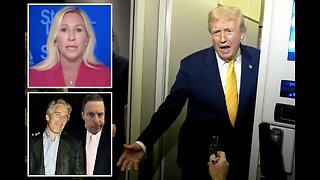 LIVE
LIVE
Jeff Ahern
1 hour agoThe Sunday Show with Jeff Ahern
337 watching -
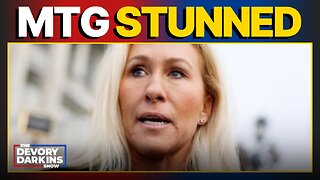 27:41
27:41
DeVory Darkins
1 day agoMarjorie Taylor Greene STUNNED after Trump pulls her endorsement
22.2K233 -
 32:41
32:41
Tactical Advisor
3 hours agoNew Red Glock? | Vault Room Live Stream 045
36.4K5 -
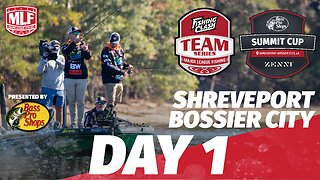 LIVE
LIVE
Major League Fishing
3 days agoLIVE! - Fishing Clash Team Series: Summit Cup - Day 1
788 watching -
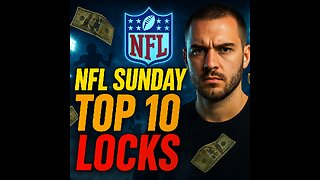 4:38
4:38
Talk Nerdy Sports - The Ultimate Sports Betting Podcast
5 hours agoNFL SUNDAY — Top 10 Locks You NEED to See (Nov 17)
25.1K -
 18:03
18:03
Nikko Ortiz
3 hours agoNikko Ortiz Night Routine...
13.8K6 -
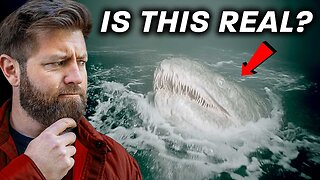 21:37
21:37
Forrest Galante
16 hours ago6 Deadly Sea Monsters That Actually Exist
117K8 -
 LIVE
LIVE
JdaDelete
4 hours ago $1.37 earnedElden Ring | First Playthrough Episode 10
189 watching -
 8:10
8:10
MattMorseTV
1 day ago $65.93 earnedDemocrats caught COLLUDING with Epstein.
84.6K133 -
 2:05:50
2:05:50
Pepkilla
4 hours agoBreakfast First ~ Camo Grind Call Of Duty Black Ops 7
15K1